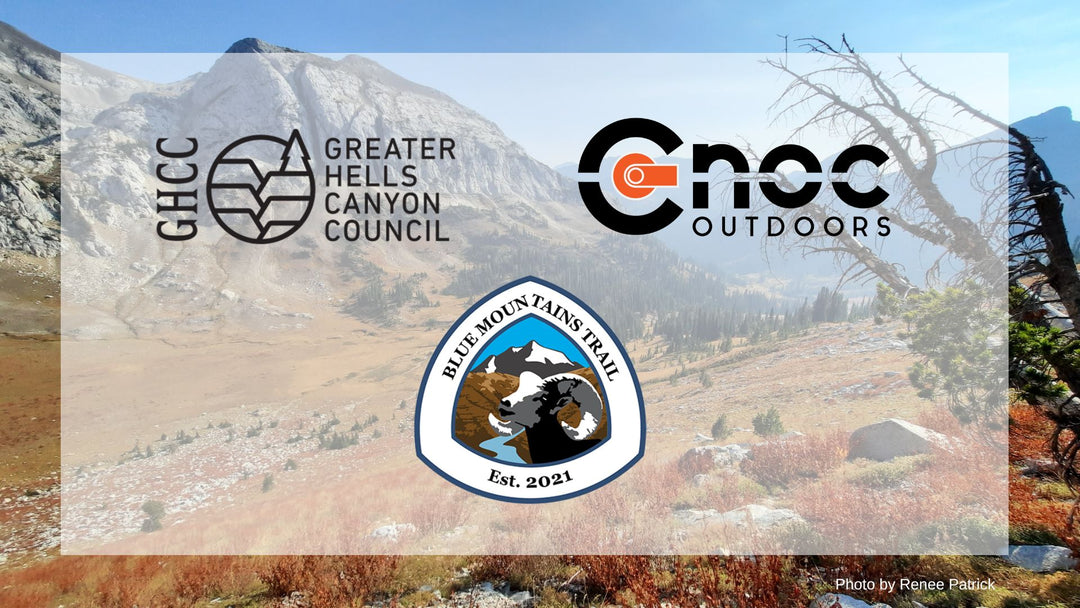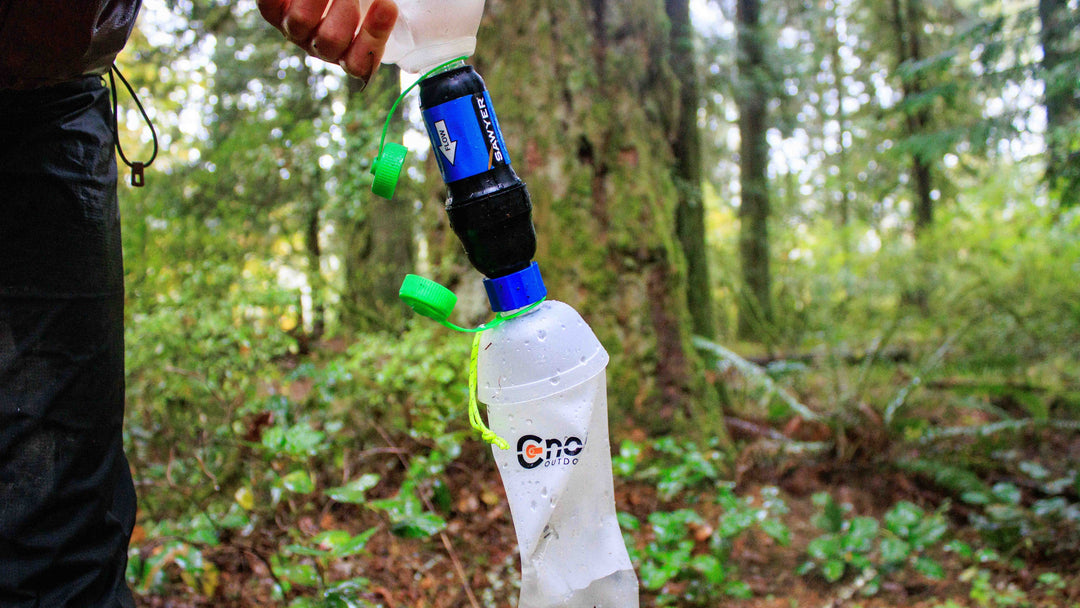Hiking Boots Or Trail Shoes?

I remember when I first decided I no longer wanted to hike with boots: my wife and I had been walking the Offa’s Dyke national trail for a week, proceeding at a leisurely pace with our heavy packs and our walking boots when on the 7th day my knees flared up, getting fully inflamed. I had not done anything special besides hiking, which I had done many times before and I usually walk for miles in my daily routine, so it made no sense! When I got home I went back to my regular shoes (Inov-8 Tarroc 330) and my knees felt great – that was my aha! moment. That was when I decided to start my transition from hiking boots to trail shoes, or at least try it out and see what would happen.

Over the years I have become a true advocate for trail shoes for any kind of hiking and backpacking. To be honest, unless I'm doing some major yard work, I never wear boots. But is it right for you? Let's check it out:
A brief history of footwear development
Footwear has been with us for a very long time, filling two main functions: skin protection from sharp objects and insulation in cold conditions. The latter meant that footwear was more common in colder, often mountainous, areas, while in warmer and wetter areas people just walked barefoot. In desert environments, where sand can become very hot, the use of soft thong-sandals has been used for ages.

Until roughly the 15th century, all footwear was soft soled to allow the best foot movement. The introduction of heels, the idea of height as a measure of power and stiff soles were introduced across Europe in the 15th century. Many cultures continued walking (and running) barefoot and a few still do today, at times using nothing but a thin hide sole to protect the skin.
The move to stiff soled footwear created foot issues and reduced foot strength, leading to health issues that required the introduction of orthopaedic support items such as insoles, arch supports and heel holders. Modern shoes are very highly engineered, leading to increased support and comfort while reducing the natural foot and leg strength.

Boots were originally used to protect more of the leg while walking to prevent scrapes and bruises from brush, rocks and snow (more insulation). When those soft boots were used for more vertical climbs, the soles were found to be too soft to allow a “kick in” to snow, so stiffer boots that provide greater traction were developed. Those boots originally had soft tops, but the need to increase foot protection and the danger of heel rolling (from the stiff sole) required stiffening the upper, too. We ended up with very stiff and strong boots for climbing in winter conditions and which have trickled down to other outdoors activities.

The re-introduction of barefoot, minimal and natural footwear practices in the last decade have seen the return of softer, better gripping soles and less cushioning. I won’t go into a full lecture about minimal and natural footwear, but will mention the below to give context to choosing trail shoes:
- Stiff soles don’t allow foot roll and can cause unnatural foot and joint movement
- High boots reduce calf strength, increasing the chances of shin splits
- High differential (between the heel and the forefoot; the higher it is the higher the heel is) enables a heel stroke that can be very damaging for joints and increases the risk of Plantar fasciitis
If you want to learn more about natural movement, the internet is exploding with information. I’m a big fan of that approach as I have learned it allows me to move better, over longer distances, with less injuries. This is not to say it is the best way for you, but just how I see things. Minimal footwear is very controversial, but even if without choosing the full “minimal experience” there are benefits of using shoes over heavy boots.
Key differences between trail shoes and hiking boots
Sole and stiffness
A sole here will refer to the outer sole, mid sole and insole. The claims below are generalizations for the simplicity of the discussion; there are other options out there.
Boots offer stiff, thick soles that are graded B0 to B3 in stiffness level; the soles are graded to match crampons that hold a corresponding grade (0-3) for their intended use. The lower the grade, the softer the sole, intended for flatter surfaces where foot roll is important, while a B3 boot offers no foot roll but allows a climber to easily “kick in” to the ice with crampons and side step on higher gradient slopes. Trail shoes offer very soft soles that allow high foot roll for easy, fast movement; some shoes offer a full or half shanks the are very stiff towards the heel and get softer towards the front. Those shanks allow forward foot roll while preventing lateral roll and damage to the ankle and the tendons in the foot.

Hiking boots tend to have thick lugs for better traction in muddy conditions and on rock edges. Trail shoes usually have smaller lugs, though some shoes are more aimed at muddy conditions and offer soles that are almost like cleats – but those tend to be very uncomfortable on hard packed surfaces.
Most modern hiking boots offer various density mid soles to increase comfort, sometimes using multiple layers where the top layer is soft for immediate foot comfort while the lower sections are stiffer for load bearing. Trail shoes, in many ways, offer very similar construction, but in lower densities, aiming to carry lighter loads but which are also more comfortable without a load (backpack).

Upper and liners
The upper part of boots are usually made from leather or a mix of leather and textile for increased breathability. The purpose of an all-leather upper is to offer more robust and protective construction for a longer lasting boot compared to trail shoes. It is very rare to find leather uppers in trail shoes, as the need for breathability is greater than the need for foot protection and durability. Trail shoes are usually all mesh with some protection in the front and back using a rubber rand.

The use of waterproof liners is very common with hiking boots, whether all leather or leather and textile. The waterproof liners can be made using any of the big brands (Gore, eVent etc) or in house and are meant to offer the wearer water protection from the outside while moving sweat and heat to the lip of the boot to be “dumped” out. Trail shoes are usually not waterproof, being made of breathable mesh to allow heat and sweat to move out easily. When trail shoes are waterproof, it is using the same technology as boots.
Modern footwear in general (at least active footwear) tends to have a double layer of mesh (when it is used) with some foam in between for some protection and insulation. In boots, that foam is usually ticker and stiffer compared to trail shoes for increased protection, insulation and durability.

Weight
Probably the biggest difference between hiking boots and trail shoes and the main reason such a change is needed is that all that extra protection, durability and stiffness come with a weight price tag: boots are much heavier. The old saying is that a pound (450g) on your feet is the equivalent of 5 (2.25kg) pounds on your back, so those boots are a real punishment.

Most hiking boots are heavy (2+ kg), while trail shoes can easily be under 500g for a pair. Based on that general difference and the old saying, when choosing trail shoes over boots we are cutting about 6.5-7kg off our backs – this a big change.
The big downside of this weight cut is durability: you can expect a good pair of hiking boots to last thousands of miles, staying with the usual walker for years and years. Trail shoes, on the other hand, will last 500-1000 miles (at best), sometimes even less for the lighter ones. This is very frustrating, but when it comes to enjoying a trip, it is worth it!
So, did I convince you that trail shoes are great or are you still a firm believer in solid and secure boots? The transition is easy but I know many hikers and backpackers that love their boots, no matter what, and it does work for them. Lets me know in the comments what is your preference.









Good article.
I got expensive, professionally fitted shoes and they give me all sorts of foot pain. They are hard soled with no bend, but breathable and waterproof.
Turns out my soft “freerunner” nike’s are perfect. The soft sole is much better on my feet and I can walk all day without either short term soreness or long-term plantar fasciitis.
Most of what I hear and read nowadays is the trail runner bandwagon is at overflow capacity. Most folks want to be on that train. As a runner of trails I have traditional trail shoes and zero drop trail shoes, but I actually ❤️ my Keen hiking boots. They’re extremely comfortable, waterproof, provide unparalleled support, and I’ve yet to address a blister. I haven’t yet worn them 10-30 miles a day for several days or months at one go but I am planning to testing them this way this month.
I like Hiking shoes. Hiking footwear must accomplish two primary tasks.It must provide adequate ankle support to prevent sprains and injury.Wearing shoes that dry out quickly becomes even more valuable when hiking on trails that require you to ford rivers http://bestofgears.com
Leave a comment